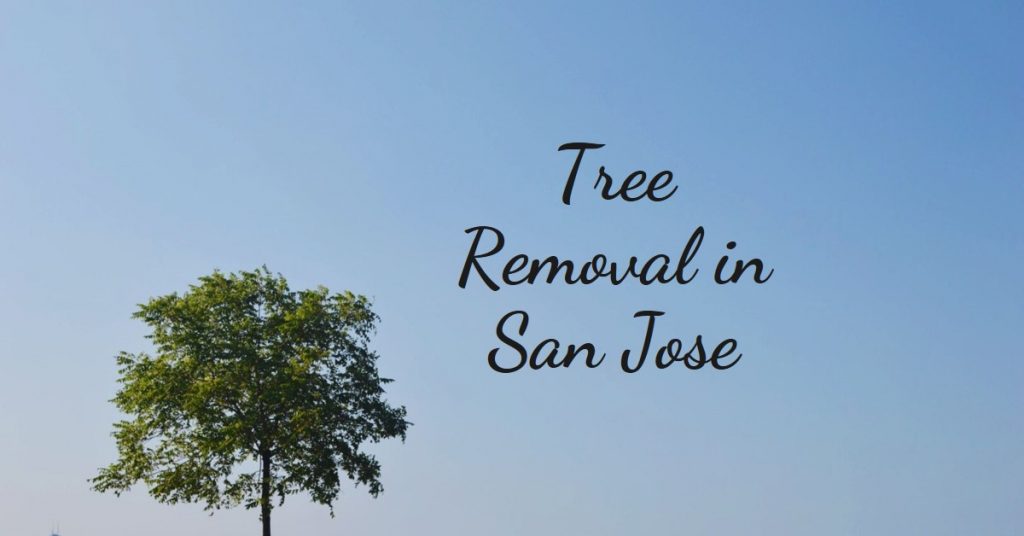Yes, In San Jose, a permit is required to remove a tree if it is a street tree, a heritage tree, an ordinance-size tree, or if it’s located on multifamily, commercial, industrial, or mixed-use property or in a common area.
If the tree doesn’t fall into any of these categories, you can remove it without a permit.
The city values the urban forest and has strict rules for tree removal.
To avoid big fines, knowing the rules for each type of tree is essential to prevent considerable penalties.

Street Trees and Heritage Trees
Street trees and heritage trees are particularly protected. It’s illegal to prune or remove a street tree without a permit, attracting fines of up to $15,000 per tree.
The fines for heritage trees can escalate to $30,000 per tree.
Such substantial penalties reflect these trees’ intrinsic and extrinsic value to the community, from environmental benefits to aesthetic and property value enhancement.
Ordinance-Size Trees
Ordinance-size trees, both live and dead, are also subject to this permitting process.
The permit’s cost, hovering around $280, is a modest investment to avoid legal complications and ensure the tree’s removal adheres to the city’s safety and environmental preservation standards.
Multifamily, Commercial, Industrial, or Mixed-Use Properties
These regulations safeguard trees on multifamily, commercial, industrial, or mixed-use property or common areas.
The rationale is to mitigate unchecked tree removal that could detrimentally impact the city’s landscape, ecology, and communal spaces that many residents and businesses enjoy.
The City of San Jose’s approach to tree management and removal permits is predicated on a comprehensive understanding of trees’ collective benefits.
Unlike other cities, the city’s general fund does not cover staff time spent on tree removals.
Every tree contributes to air quality, offers shade, enhances aesthetics, and fosters a sense of community well-being.
Consequently, the city justifies the costs associated with tree removal permits as a necessary expenditure to maintain this valuable resource.
Exceptions of Permit Process
The removal process is less bureaucratic for those who own trees not falling within the categories above.
These tree owners can bypass the permit process, allowing for quicker and more cost-effective removal.
However, confirming the tree’s status before removal is necessary to avoid unintended violations.
What You Should Know About the Tree Removal Process
To remove trees in San Jose, you need to know the rules, effects on the area, and laws. The process is more complex than one might imagine.
Depending on its classification and location, every tree is governed by strict regulations to balance the need for removal with the overarching goal of preserving the city’s lush urban forest.
Residents and businesses should understand some critical aspects of removing a tree.
Find Out The Tree’s Classification
First, find out what kind of tree it is to start removing a tree. To understand, we need to know if it’s a street tree, a heritage tree, or on specific properties.
The classification affects if you need a permit and the steps to follow. This statement ensures that removing the tree is by the rules set by the city and meets the ecological goals.
The Importance of a Permit
Getting a permit is required by law and helps manage urban forestry in San Jose. Following the permit rules prevents big fines and helps keep the city looking nice and clean.
Each code has two purposes: to make tree removal more accessible and to protect the urban forest.
Contribution to Ecological and Environmental Objectives
Every tree, preserved or removed, plays a significant role in the city’s ecology.
Residents and businesses contribute to shaping a green, vibrant, and sustainable cityscape.
The community follows rules to balance urban development and preserve nature.
A Thoughtful Removal Process
The permitting process ensures that tree removal is conducted with consideration for both the immediate community and the broader environment.
The approach balances individual property rights and needs with urban forest protection.
The city removes trees but still cares for its green legacy, bringing nature to the metropolitan area.
In Summary
Understanding and complying with San Jose’s tree removal permitting process is essential.
The city remains committed to keeping and improving its urban forest for everyone who lives there now and in the future.
Each permit we get brings us closer to finding a balance between city growth and nature.

